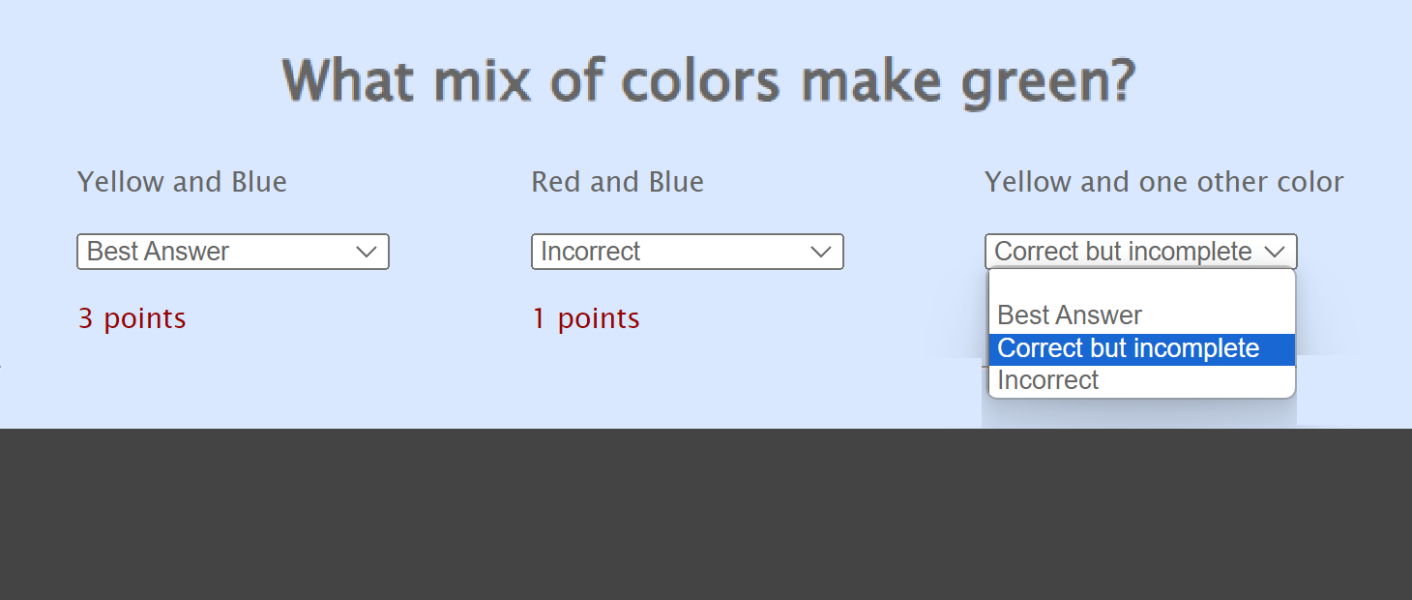
How To Design Better Multiple Choice Quizzes — 2 Tips
I'm going to show you two ways to improve multiple-choice quizzes.
Testing using multiple-choice quizzes is certainly not a good way to assess skill or behavioral change, but it can be okay for measuring current knowledge.
I say current knowledge because students who memorize concepts to pass a multiple-choice quiz typically forget the answers within a few days. This begs the question of why multiple-choice quizzes are so widely used in education — but let's leave that for another discussion.
Tip #1
Present 3 multiple-choice answers instead of 4.
Have you ever wondered why many quizzes include 4 answers? It turns out that research shows no meaningful difference in results between 3 or 4 answers.
So, it's better to offer 3 answers because it's easier for teachers to create quizzes and students may find them less intimidating and take less time to complete.
Tip #2
I'm sharing a technique we use in the multiple-choice quizzes that are included with some of our GoVenture simulation games. We believe this technique significantly increases the accuracy of the test results and reduces the impact of guessing.
Let's use this question as an example:
Question: What mix of colors makes green?
1. Yellow and blue
2. Red and blue
3. Yellow and one other color
A typical quiz might reward you 5 points for choosing (or guessing) the correct answer. And 0 points if you choose the wrong answer.
Note that a blind guess gives you a 33% chance of a correct answer. A somewhat educated guess likely gives you a 50/50 chance of guessing correctly. Some quizzes try to discourage guessing by deducting points for wrong answers. I'm not a fan of this approach because it contributes to fear-based education (which I wrote about here).
Here's our technique ...
For each of the 3 answers, we provide 3 selections:
- Best Answer
- Incorrect
- Correct but Incomplete
The student must make the correct selection for each of the 3 answers, as shown below.

There can only be one Best Answer, while *Incorrect*and *Correct but Incomplete*can be repeated.
- 3 points are earned for the correct Best Answer.
- 1 point is earned for each of the other two correct answers.
- To earn the maximum 5 points, all three have to be correct.
This approach better ensures that students have a deeper understanding of the content being tested.
More On Assessment
- Fair & Stress-Free Student Assessment
- Assessment Strategies for Educational Games and Simulations
- Video of the concepts described in this article —
Receive this newsletter by email —
I'm Mathew Georghiou and I write about how games are transforming education and learning. I also share my experience as an entrepreneur inventing products and designing educational resources used by millions around the world. More about me at Georghiou.com